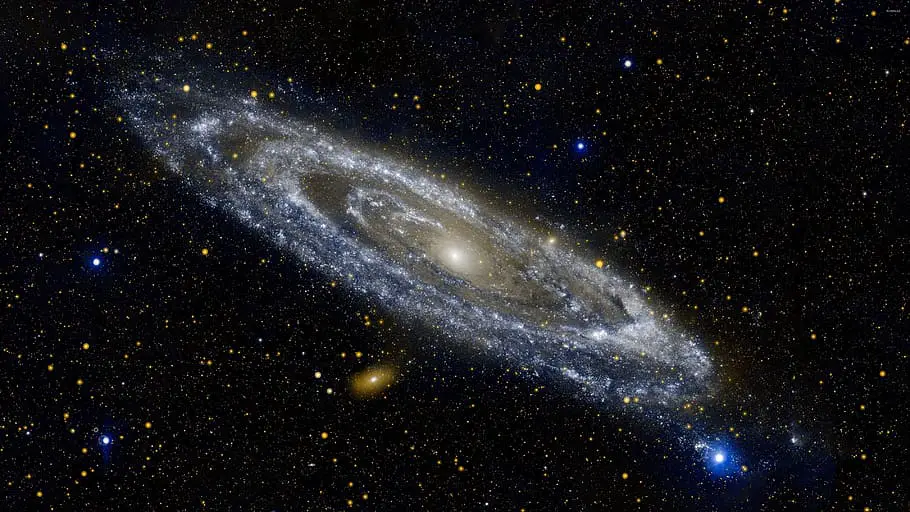The Milky Way Galaxy is a spiral structure with hundreds of billions of stars, including the Sun. The Milky Way Galaxy is a spiral structure of stars. The Milky Way, an irregularly brilliant band of stars and gas clouds, gives the Galaxy its shape. Even though Earth is wholly within the Milky Way Galaxy, astronomers do not fully grasp distant star systems (often referred to simply as the Galaxy). Radio and infrared telescopes detect the many types of radiation that penetrate the obscuring matter, allowing observers to establish the Galaxy’s large-scale structure. Much of the Galaxy is hidden from optical telescopes due to a thick coating of interstellar dust.
The Milky Way appears as an arc of diffuse light from Earth in the nighttime sky, like Orion. The Romans named it Via Lactea after a band of milk spilled; the English name comes from: Until Galileo Galilei saw it with a telescope and learned that the light from the Milky Way is derived from an unlimited number of distant stars. A tight ring of stars is seen in the shot, but the stars are too far away to discern individually.
Until the early 1900s, astronomers believed the Milky Way galaxy contained all of the universe’s stars (either the Milky Way extended to fill the entire cosmos, or it was a finite size and surrounded by an infinite void). Britannica says astronomer Edwin Hubble discovered the Andromeda Nebula in the early 1920s. He realized that it was its Galaxy, with its own “island” of stars millions of light-years distant from us.
Milky Way is a little disc of gas and dust in space. This explains why it seems to us as a band. When looking at the disc of light from Earth, one can see the combined brightness of all the stars in our Galaxy. When looking away from the light disc, we can only see the nearest stars.
The Milky Way galaxy is divided into three primary parts: the core, the disc, and the halo (or halo sphere).
The core is expanded into the shape of a bar, ranging in length from 5,000 to 20,000 light-years. According to the Space Telescope Science Institute, the Milky Way’s core includes up to a quarter of the Galaxy’s stars, with a density up to a million times that of the Sun’s neighborhood. The UCLA Galactic Center Group says Sagittarius A*, a supermassive black hole 4.1 million times the mass of the Sun, is at the Galaxy’s core.
Facts about the Milky Way
More than 200 billion stars exist in the Milky Way, with enough dust and gas to produce billions more.
The solar system is around 30,000 light-years from the galactic center and 20 light-years above the galactic plane. The Earth and its companions are tipped by approximately 63 degrees inside the Galaxy plane.
Moreover, half of the stars in the Milky Way are 4.5 billion years older than the Sun. Around 10 billion years ago, galaxies like ours went through a stellar baby boom, spawning stars en masse.
Common in the Galaxy are red dwarfs, excellent stars with a tenth of the Sun’s mass and a diameter ten times that of the Sun. Red dwarfs, traditionally rejected as unsuitable candidates for potential life-bearing planets due to their proximity to the criteria, are being investigated.
How many stars are there in our galaxy, the Milky Way?
There are an estimated 100-400 billion stars in our galaxy, with more being discovered all of the time. Our galaxy is roughly 120,000 light years across and rotates at a speed of 300 miles per second. The Sun is located about 27,000 light years from the center of our galaxy and orbits it once every 225 million years. The Milky Way has four spiral arms that wrap around its center like a pinwheel. The arms contain young blue stars as well as giant molecular clouds of gas where new stars form. These clouds glow brightly in infrared wavelengths but are invisible to human eyes. Scientists estimate that there may be anywhere from 200 to 400 billion stars in our galaxy alone!
![]()
